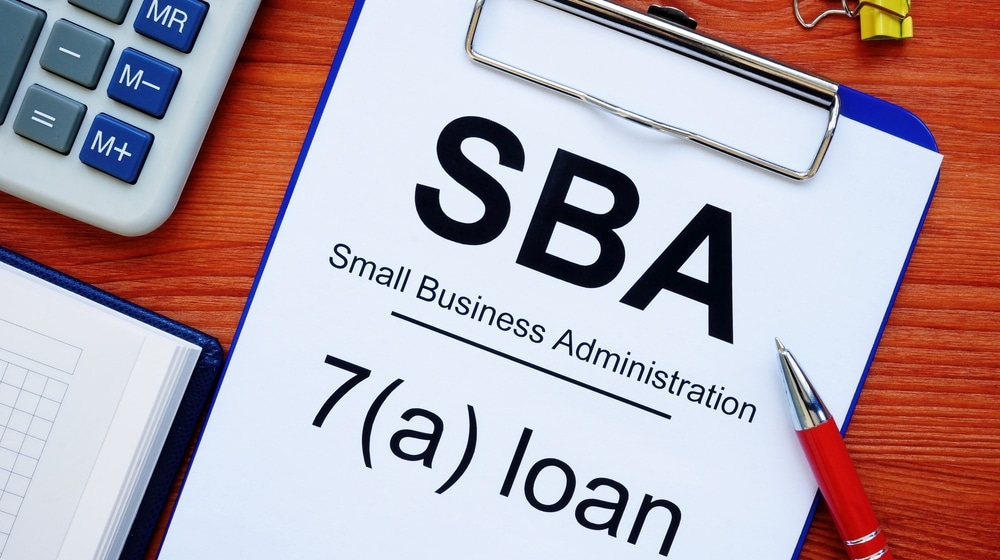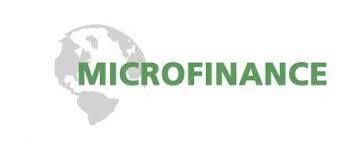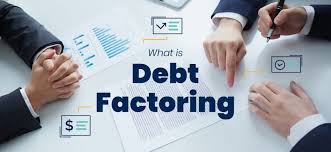Running a small business can be tough and comes with its own set of challenges, especially in times of uncertainty, revenue loss, and economic hardship. One’s saving grace for small businesses since they receive the greatest hit are SBA loans. Basically, these loans are used to acquire business essentials like real estate, equipment, working capital, and inventory. On that note, this post will expose you to the important details concerning SBA loans, ranging from definitions to SBA loan rates and applications. This also includes SBA Disaster loan rates, Chase loan rates, and the SBA 7(a) loans.
With that out of the way, let’s set the ball rolling …
SBA Loan Definition
An SBA loan is a financial tool designed by the Small Business Administration (SBA) to help small businesses secure loans. They achieve this feat by guaranteeing a portion of the amount to be borrowed, capping interest rates, and limiting any other fees that may arise. For the most part, this guarantee helps small businesses acquire funds that they may not otherwise obtain on reasonable terms and conditions from the bank. In the fiscal year 2019, the SBA facilitated nearly 52,000 loans. Combined, the value of these loans totaled over $23 billion.
On the other hand, the Small Business Administration is a government agency that guarantees and eliminates some of the risks for financial institutions giving out the loan. They work with a network of approved financial institutions that frequently lend money to small businesses on better terms. However, the SBA takes responsibility of a fraction or percentage of these loans been at the end of the day. In other words, if these businesses are unable to pay back the loan collected, the SBA will cover the portion that they guaranteed depending on the agreement reached by them and the financial institution.
Without this partial guarantee, which can go as high as 85% of a loan amount, banks consider lending to small businesses too risky.
Read Also: SME loans: The Updated 2023 List (+Detailed Application Guide)
Furthermore, the SBA loan application process is often very thorough and restrictive, with tons of documentation and details taken into consideration. This is because government agencies are usually in charge of this process. But on the flip side, this tedious processing helps to reduce or eliminate the likelihood of the failure of any business entity in repaying back the money collected.
Meanwhile, small businesses who don’t secure loans guaranteed by the SBA often qualify for less-than-ideal terms, if they’re even able to qualify for a bank loan at all.
SBA Loan Rates
The Small Business Administration (SBA) provides a number of loan programs designed to help small businesses grow. But they also rank as the best options for having some of the lowest interest rates available. Below are the rates for three of the SBA’s most popular loan programs.
- SBA 7(a) Loans (business loans for most general business purposes),
- SBA CDC/504 Loans (business loans to finance real estate and other fixed assets),
- Economic Injury Disaster Loans (loans to rebuild following a disaster).
However, here are the current interest rates for SBA loans as of January 2021:
- SBA 7(a) loans: 5.50% – 9.75%
- SBA CDC/504 loans: Approximately 2.43% – 3.06%.
- Economic Injury Disaster Loans for COVID relief: 3.75% for for-profit businesses and 2.75% for non-profit businesses.
- Paycheck Protection Program loans: 0% if forgiven; 1% if not forgiven.
- Maximum rates for other SBA disaster loans: 4.00% with no credit available elsewhere, or 8.00% with a credit available elsewhere.
Chase SBA Loan Rates
Chase Bank (JPMorgan Chase Bank, N.A.) is currently one of the four largest banks in the United States with one of the best SBA loan rates. It is a national bank based in New York City. The company offers a competitive array of products that small businesses can take advantage of, assuming you’re in a region where a Chase branch serves. Chase SBA loan rates come with great offers irrespective of the fact that banks tightened their lending standards since 2008. Furthermore, unlike many of its smallest competitors, you’ll need to apply for Chase SBA loans in-person.

According to sources, Chase SBA loans boast of having some of the best, if not the best, lending rates in the country. Those elite rates are available mostly to an elite clientele. Still, if you have a stable, profitable business and/or a stellar credit rating, it’s probably not a bad idea to talk to your local Chase SBA loan officer to see if you could qualify.
SBA Disaster Loan Rates
SBA Disaster Loans are funding opportunities that focus on helping businesses stay afloat and rebuild following a disaster. To qualify for SBA disaster loans, you will need to be a business or consumer in a declared disaster area. A disaster loan basically covers the remnants from your insurance company or FEMA ( Federal Emergency Management Agency), cost-wise.
So, if your business becomes a casualty of any disaster, you stand a chance for a long-term, low-cost loan for physical or economic damages. Consequently, loans for physical damage cover repairs or replacements of damaged properties by the disaster. On the other hand, loans for economic damages help small businesses survive until normal operations resume after a disaster by giving you the working capital necessary to keep your business going. A perfect example of the SBA Disaster Loan with great rates is the EIDL (Economic Injury Disaster Loans) For COVID-Affected Businesses
EIDL (Economic Injury Disaster Loans) Rates For COVID-Affected Businesses
The COVID-19 pandemic presents an acute crisis affecting businesses throughout the entire country. Unlike other disasters, a virus doesn’t directly damage property, but may sharply affect your sales due to quarantine and lockdown orders, as well as customers’ anxiety about exposure to the pathogen. As a result of this, Economic Injury Disaster Loans (EIDL) for COVID-19 have some slightly different properties.
This SBA Disaster loan mostly focuses on helping businesses pay fixed debts, deal with payroll, accounts payable, and other bills that come as a result of the disaster.
Rates for this SBA Disaster Loan are as follows:
- For-Profit Businesses: 3.75%
- Non-Profit Businesses: 2.75%
Like other SBA disaster loan rates, COVID-19 EIDLs have fixed rates, meaning they’ll remain constant throughout their lifetime. However, deferments for repayment of the loan last for the first 12 months. Also, terms last up to 30 years, and you can borrow up to $2 million (up to $25,000 without collateral).
SBA Loan Rates For Other Disasters
Disaster loan interest rates depend on whether or not you have the ability to access funds elsewhere, which the SBA calls credit available elsewhere. It literally means that;
- If you have credit available elsewhere the maximum interest rate will be 8%.
- If you don’t have credit available elsewhere the maximum interest rate will be 4%.
But it also important to know that SBA Disaster loan interest rates are constant, which means that they will stay the same regardless of changes in the management during the course of the loan. Although the above numbers reflect maximum rates, disaster loans often carry lower interest rates, especially for non-profit organizations.
Read Also: Student Loans Company Guide: All You Should Know (+ free tips)
SBA Disaster Loan Eligibility & Terms
Both for-profit and private non-profit businesses are eligible. This is because disaster loans are still loans. The SBA still goes through the stress of screening interested businesses. They need to be sure you’d be able to pay back in the time frame laid down.
Here are the basic eligibility requirements:
- The business must be in a declared disaster area
- It must have experienced physical or economic damage to your business
- The business must have demonstrated the ability to repay the loan
- The business must have acceptable credit
Eligible applicants can now borrow loans with these terms:
Most loans have a maximum borrowing amount of $2M, but the amount you get depends on need and repayment ability.
- If you don’t have credit available elsewhere, the loan has a maximum term length of 30 years; if you do have credit available elsewhere, the maximum term length is 7 years.
- For loans over $25,000, the SBA will require that you pledge any collateral that you have available.
How SBA Disaster Loan Rates Are Determined
Disaster loan rates are determined by these factors:
- Credit available elsewhere: If you have the ability to access funds from other, non-federal, sources, the SBA will assign you higher interest rates.
- Type of business or organization: Disaster loans only go to businesses, private non-profit organizations, small agricultural co-ops, and homeowners. Your interest rate, however, will be dependent on the category you fit into. In general, businesses have the highest interest rates, whereas homeowners have the lowest.
- Type and location of disaster: Interest rates differ and are dependent on the disaster and area. To see the rates available in your area, take a look at the fact sheet via the SBA’s disaster loan portal.
Where To Find Disaster Loans
You can check whether your business is in a declared disaster area and get your application started via the SBA’s Disaster Loan Assistance page
SBA 7(a) Loan

The 7(a) loan program is the Small Business Administration’s most popular program. The SBA works with partners, such as Chase and other financial institutions, to offer low-cost loans for most business purposes, including working capital, refinancing, equipment, and other reasons.
However, SBA 7(a) loans usually the easiest to qualify for and can be used for a number of different purposes. Basically, the SBA guarantees up to 75% of the loan which is up to a maximum of $5 million for big spenders.
These SBA loans are best for borrowers looking to make a major business expansion, purchase an existing business, manage cash flow, or purchase equipment.
Eligibility and Terms:
If you run a profit-making business, you are likely eligible for a 7(a) business loan in the eyes of the SBA. However, the partner lenders are ultimately responsible for borrower eligibility. In general, to qualify for a loan, you will need to meet certain requirements:
- Own a business that is at least two years old•
- Have fair credit
- Have strong cash flow and debt-to-income ratio
If eligible, borrowers benefit from long-term, low-interest loans that can be used for most general business purposes.
- Most loans have a maximum borrowing amount of $5 million, but SBA Express loans max out at $350,000. The amount you are eligible for will depend on the use of proceeds, your cash flow, and other factors.
- The maximum term length is 10 years for most loans, including inventory, working capital, and equipment. For real estate, the maximum term length is 25 years.
- The SBA including 7(a) loans guarantees a portion of your loan. For loans of $150,000 or less, the SBA will guarantee 85% of the loan. If your loan is above $150,000, the SBA will guarantee 75% of the loan. Express loans carry a maximum guarantee of 50%.
Furthermore, the SBA charges a guarantee fee of 0% to 3.75% and a possible prepayment penalty. SBA partners might also charge fees, such as closing costs, referral fees, packaging fees, or others.
SBA Loan Applications
Since Small Business Administration guarantees loans for SBA-qualified lenders, even though banks and online lenders may be more inclined to approve these loans to qualified applicants.
But SBA lending does require certain qualifications, and the loan process can be complicated. Each SBA loan applications has a slightly different set of rules and requirements, which we’ll cover in this article.
SBA Loan Applications Checklist
Once you have decided to apply for a loan guaranteed by the SBA, you will need to get the appropriate documents for your application. It is however important to note that the SBA hardly provides direct loans. The process starts with your local lender, working within SBA guidelines.
The checklist below should guide you every step of the way. On your part, just ensure that every requirement from your local lender is met. And once your loan package is complete, your lender will submit it to the SBA.
Read Also: Agriculture Loan List, Updated 2023!!!(13 + Application guide)
#1. SBA Loan Applications
To begin the process, you will need to complete an SBA loan application form. Access the most current form here: Borrower Information Form.
#2. Personal Background and Financial Statement
To assess your eligibility, the SBA requires you to complete the following forms:
- Statement of Personal History – SBA Form 912
- Personal Financial Statement – SBA Form 413
#3. Business Financial Statements
To support your application and demonstrate your ability to repay the loan, prepare and include the following financial statements:
- Profit and Loss (P&L) Statement – This must be current within 180 days of your application. Also include supplementary schedules from the last three fiscal years.
- Projected Financial Statements – comprises of a detailed one-year projection of income and finances. You’d also need to attach a written explanation on how you expect to achieve this projection.
- Ownership and Affiliations – Includes a list of names and addresses of any subsidiaries and affiliates, including concerns in which you hold a controlling interest. This will also cover other concerns that may be affiliated by stock ownership, franchise, proposed merger, or otherwise with you.
- Business Certificate/License – This should be your original business license or certificate of doing business. If your business is a corporation, stamp your corporate seal on the SBA loan application form.
- Loan Application History – It includes records of any loans you may have applied for in the past.
- Income Tax Returns – A signed personal and business federal income tax returns of your business’s principals for the last three years.
- Résumés – Include personal résumés for each principal.
#4. Business Overview and History
Provide a brief history of the business and its challenges. Also include an explanation of why the SBA loan is needed and how it will help the business.
#5. Business Lease
Include a copy of your business lease, or a note from your landlord, giving the terms of the proposed lease.
On the flip side, if you are purchasing an Existing Business, the following information is needed for purchasing an existing business:
- Current balance sheet and P&L statement of business to be purchased
- Previous two years’ federal income tax returns of the business
- Proposed Bill of Sale including Terms of Sale
- Asking price with the schedule of inventory, machinery and equipment, furniture and fixtures
How to Qualify for an SBA Loan
The following are practical steps to take to qualify for an SBA loan:
- Build your credit score
- Know the lender’s qualifications and requirements
- Gather the necessary financial and legal documents
- Develop a strong business plan
- Document or get a collateral
How Are the Interest Rates for Sba Loans Determined?
The loan program and base rates, such as the prime rate and Treasury rates, are often taken into account when calculating the interest rates for SBA loans. As well as the loan size, borrower creditworthiness, specific lender conditions, and whether rates are fixed or variable, SBA loan rates also depend on these factors.
What Is the Typical Interest Rate for Sba Loans?
It’s challenging to pinpoint the typical SBA loan rate because the majority of SBA loan interest rates fluctuate over time depending on the prime rate or another variable base rate. The interest rates on SBA loans are often lower than those offered by lenders in the private sector.
In Conclusion
The sooner you start working on these tasks, the better prepared you’ll be once you apply. Either way, you can seek help or a personal guide through our Contact-Us page.
How much does an SBA loan cost?
In the fiscal year 2019, the SBA facilitated nearly 52,000 loans. Combined, the value of these loans totaled over $23 billion.
Can I pay off SBA loan early?
If you take out an SBA 504 Loan for 20 years or 25 years, you have to pay back the money for 10 years before you can do it. In the same way, there is a five-year prepayment penalty for SBA loans with a 10-year term. To pay off your loan in the 9th year, you’ll pay 20% of 3%, which comes out to 0.6%.






